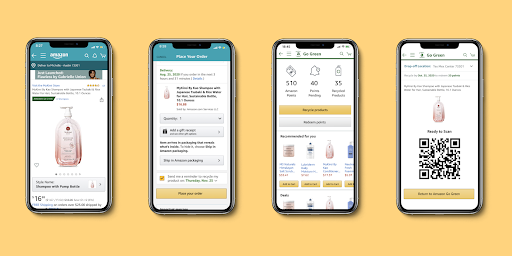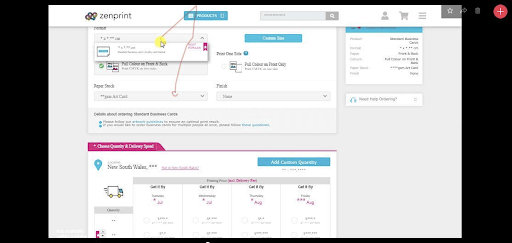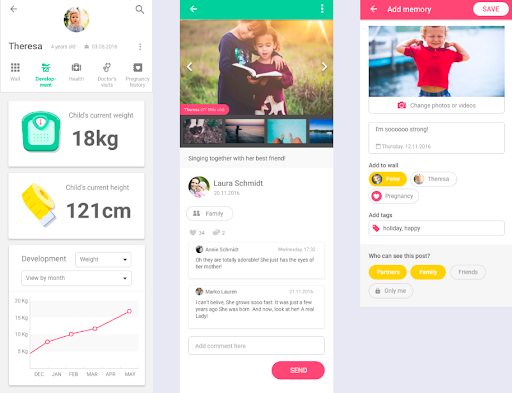E-commerce teams have plenty of experimentation opportunities to drive business value: they can try everything from the color of a call-to-action to the layout of an individual product page.
But if they don’t have user research informing their test plan and strategy, they might be leaving a lot of money on the table.
Being a store owner is different from being a customer, and getting lost in the business side of things is easy. To do some customer experience testing at your online store, you need to be more than just someone who understands business – you also have to empathize with your customers and look at things from their perspective.
And user research helps you tackle all of that.
In this article, we’ll discuss the role of user research in experimentation in detail.
The Importance of User Research in Experimentation
User research is the foundation of experimentation.
UX research helps you understand why users are doing what they’re doing. It can also help you understand what they want, how they think about your product, and how they interact with it. Without this information, knowing which experiments will be successful or produce meaningful results is challenging.
It’s a common misconception that user research is only helpful after you’ve designed a solution — and, indeed, many companies run their experiments this way. But this approach can cause you to miss valuable insights that could improve your results.
Instead, user research should inform design solutions by talking to users before you start building anything. This allows you to:
- Understand your customers’ needs better and create products that meet them better
- Identify opportunities for improvement and prioritize them based on how much they’ll matter to users.
- Create hypotheses based on evidence rather than assumptions.
There are many ways you can incorporate user research methods into your experimentation process (qualitative research methods and quantitative research methods).
Here are some strategies that we recommend:
- Conducting user interviews.
- Organizing focus groups and hearing from your users.
- Survey users about their needs and preferences
- Observe users as they interact with products or services in person or remotely (via UX research tools like heatmaps or a session replay tool).
- Gather quantitative data from web analytics tools like Google Analytics and Kissmetrics that show how people behave on your site (and identify areas for improvement)
There are several qualitative methods for conducting user research. The most common way is through surveys. Surveys are often used as a source of qualitative data, but they can also be used to gather quantitative data. Suppose you want to learn more about customer satisfaction. In that case, you can use a survey that asks participants to rate different aspects of your product on a scale from 1-5 (1 being very dissatisfied and 5 being very satisfied).
A web survey is the most effective way of gathering customer feedback because it’s easy to access, share and analyze results. You can also use social media channels, such as Facebook Messenger or WhatsApp, to ask questions or send out coupons or promotions exclusively for those who answer your survey questions.
Some companies will even create entire websites just to gather user feedback on their products or services — this could be considered an extreme form of A/B testing. However, it’s still an excellent way to determine what people think about your product.
In detail, let’s discuss user research’s role in e-commerce experimentation.
What Role Does User Research Play in E-commerce Experimentation?
1. User research informs design solutions by talking to users.
You can’t get user insights without talking to them — and to talk to them, you need to know their goals, needs, and motivations. This is why user research needs to be part of any experiment, from the initial stages of idea generation through to testing and learning from results.
Users are a great source of insight into how and why they use your product or what they want it to do.
The goal of user research is to gain an understanding of how users perceive your product or service and how they would like it to work. This information can help you make informed design decisions and even affect the types of experiments you run.
For instance, look at this case study of Amazon Go Green – which shows the importance of user research in ecommerce experimentation.
The Design Challenge team from productdesign.tips joined heads to uncover ways for Amazon to encourage more sustainability on their platform.
The challenge was to design checkout screens for the Amazon app that would encourage shoppers to recycle the goods they buy.
Another challenge was to understand their customer base and employ ways to promote sustainability on an extensive scale.
After conducting preliminary market research, they discovered that sustainable shoppers in the U.S. are better-educated young “transitional,” residing in smaller households and inhabiting urban cities.
To better tap into user needs and pain points, they further conducted five interviews with Amazon shoppers.
The research gave them these insights:
- Most of the interviewees don’t consider themselves educated about sustainable practices.
- Most of them view sustainability as an afterthought.
- Most see price as the biggest factor that deters them from practicing sustainability.
Extensive user research also helped them discover that the majority of Amazon shoppers did not purchase clothing but purchased household or body products that came in plastic bottles. Many Amazon shoppers didn’t recycle those bottles either – due to inconvenience or doubts concerning recycling eligibility.
This helped the designers reach the conclusion that the main challenge was to design checkout screens to educate buyers about products that can be recycled and incentivize them to do it.

(Source)
This case study is a testimony that User Research + Design = Better Products.
It’s also worth noting that user research isn’t just about surveying people to find out what they want. It’s also about observing people’s behavior as they interact with a product or website.
The purpose of user research is to observe users as they go about their daily lives, talk to them about their needs, and learn as much about them as possible. Then you can use this information to inform your designs and make better products.
2. Information from user research can help teams build empathy for the people who will use their service.
You’re probably wondering: how can user research possibly help teams build empathy for the people who will use their service?
What’s more, there’s a lot of talk about creating empathy when designing experiences. But what does that mean?
Empathy is the ability to understand and share the feelings of another. This is important because it allows us to put ourselves in someone else’s shoes and understand their perspective. It helps us build trust, which makes us more likely to buy from companies we feel connected to.
User research can help teams build this kind of empathy by providing information about how people use products rather than how they think they do or how they would like to use them. This information can be used to identify opportunities for improvement by understanding how users currently interact with products and services, as well as where there are gaps between reality and expectations.
For example, suppose you’re doing user testing on a new feature on your e-commerce site that requires users to convert from one page to another before completing their purchase.
In that case, this process takes too long or isn’t intuitive enough for people unfamiliar with your brand or product line. This could lead your team down several paths: You could redesign the flow so it’s easier for customers to navigate around your site.
Let’s take a real-life example with this case study of a Design Agency client – where they used a mobile ethnography project to tap into how people feel about contactless payments.
They also explored contactless payment modes in the context of delivery drivers.
The next feature of the study was linked to the functionality and value of the contactless solution. They wanted to get insights into the following:
- Why do people tip?
- What prevents people from tipping?
- What would make them tip?
Moreover, they tried to understand tipping from the tip receiver’s perspective and in the context of their service.

(Source)
To do that, they released tasks to 2 separate groups – the consumers and the drivers and ran the project over 2 phases.
In the first phase, they discovered that the concept was unclear to the drivers, who had to explain this to consumers. In Phase 2, the driver task list was cut down and simplified.
Here are some more things you can expect to learn from your user research experience:
- The information you gather will be more valuable if you consider what you want to learn before conducting the research.
- You can still get useful information even if your research isn’t as rigorous as you’d like it to be.
- It’s important to remember that your users aren’t just numbers on a spreadsheet; they’re real people with real needs and desires that aren’t always easy to quantify or qualify in a quantitative manner.
3. User research helps teams formulate hypotheses.
A hypothesis is a prediction about how a group of people will behave. When creating experiments, teams often use customer survey data as the basis for their hypotheses. They may also combine survey data with other sources of information like call center transcripts and website analytics.
User research helps teams formulate hypotheses, or testable conjectures, based on what they have heard from users.
To create an experiment based on survey results, you need to be able to make sense of them. You need to understand what questions people ask when they take your survey and how responses might differ across segments or groups of people (for example, by age group).
You also need some sense of whether your respondents are representative of the population you want to learn from (for example, if you’re conducting a survey online, then it makes sense to make sure that your sample is well-matched with users from your target audience).
And user research helps you do just that.
For instance, Zenprint was facing a major challenge of spotting factors resulting in drop-offs on their site. It was hard for them to find out where people were spending their time, what users were interested in, and the cause of the drop-off.
Zenprint’s marketing team used a user research tool to analyze web performance and tap into user behavior at a granular level. They found out that their pricing table was the issue.

(Source)
Once they spotted the problem, they split-tested multiple layouts and optimized the pricing table. This helped the team reduce drop-off rates by 7% and increase its conversion rate by 2%.
The best way to use user research for experimentation is by conducting it throughout the entire experimentation process: from hypothesis formation to learning what worked and what didn’t.
4. User research helps prioritize what to test and gives you a good starting point for developing test ideas.
According to statistics, 50% of a developer’s time is used up when trying to solve problems that could have been avoided.
This can be avoided using user research.
When we are starting with a new product or feature, we often don’t know which aspect of our offering users find most important or which is going to have the most impact on our business goals. User research helps us make sure we’re testing the right things.
Moreover, user research gives us insight into what users really want and need out of our product or service — it’s not just about making something better but also making sure it’s relevant and useful for our target audience. This knowledge helps us develop ideas for tests that are likely to succeed and deliver real value for your users and business.
For example, if your website has a lot of products, it’s important to understand how users find products they want to buy.
User research can help you understand how people search for products on your site and whether they are able to find what they’re looking for. If not, you’ll want to prioritize testing different search features on your site.
User research can also help you understand how much people like certain features on your site or app (like recommendations or wish lists). Then you can use that information when prioritizing which features should be tested next.
Lastly, user research helps you identify pain points in the buying process so that you know where to focus your efforts when testing different flows and UI/UX changes.
5. User research helps teams understand how their service is doing against the user’s needs.
When working on ecommerce websites, getting caught up in data and analytics is easy. You look at your traffic numbers, conversion rates, and key performance indicators (KPIs).
You test different layouts and designs to see if they improve engagement or decrease cart abandonment. But this kind of work doesn’t always tell you why something works or how users behave in a natural environment.
After all, it’s not enough to just know what features people want on a website; we also need to know what they want from those features.
For example, suppose someone wants a feature like “real-time notifications” on an e-commerce website. In that case, that might mean different things for different people — some may be looking for real-time shipping updates, while others may simply require an alert when their order ships out so that they can receive it as soon as possible.
This is where user research comes in.
User research helps teams understand how their service is doing against the user needs — what they want from your product or service and why they would choose one option over another. When done right, user research can also help teams identify pain points to create better user experiences.
Let’s take this real-life case study of a company that sells products and services for homeowners. They carried out a competitive usability assessment on the residential insulation site.
The goal was to discover what factors added to a good homeowner experience when they find their insulation products and benchmark their experience against competitors.
They conducted unmoderated usability testing on their website and got lots of data. They also conducted the test on competitors’ sites to see how they stacked up against them. The research helped them improve their product search page on their residential insulation site.
6. User research surfaces concerns early in the project lifecycle.
Research is a valuable part of the design process, as it helps inform the direction of your designs and the decisions you make along the way.
In an ideal world, we would completely understand our users by the time we started designing our product (or service). But rarely do we have all the information we need to make informed decisions early on in a project.
This is where user experience research comes into play.
It allows us to understand what motivates our users, what they like and dislike about existing products/services, and ultimately how we can create something that meets their needs better than what’s currently available. And using user research techniques, you can gauge many usability issues early on in the customer journey.
The trick is to use it at the right time and place.
User research is most effective when used as part of an iterative process, where you can make incremental changes based on user feedback.
For example, if a product team wants to improve the checkout experience or onboarding flow, they can ask questions like “where did you get stuck?” or “what could we do better?”
They could then go back and test out different solutions based on what they learned from users — whether that’s making changes to copy or adding additional resources for more information about a specific feature. This way, you can constantly improve your service as you learn more about how people are using it and what their needs are.
To illustrate this point, let’s take this real-life instance of a company that wanted to build a web-based desktop platform where families could share their memories and track the development of their newborn babies.
To learn about the emotional conditions of the mothers, the team conducted many user research interviews with moms and paid attention to these influential factors while designing the platform.
Because the web app was designed for parents and not children, it uses language and graphics that adults will understand.
When the team designed their mobile app, they realized that some moms might want to keep certain moments private. Others might want to share those moments with only a close circle of friends. They designed the platform to allow both possibilities.

(Source)
This shows just how important user research is – in all different stages of experimentation.
It allows us to get feedback from real users at every step along the way and identify user problems – which means we can make better decisions about how we want our product to work and what features we should build first.
7. It helps understand the target audience.
User research helps you understand who uses your product, what they want from it, and how they want to interact with it. It also provides insights into how people use products differently or differently than you expect them to use them.
For example, if you build an ecommerce website that sells clothing online through an online store, you might assume that people will search for products by brand name or category first, then sort by price. But what if they don’t? What if they search by price first because they’re looking for the best deal? Or what if they don’t know what brand they want until after browsing through all of the products available?
As marketers, we often use demographic data to help us define our target audiences. Demographic data includes information like age, gender, and income level. But it’s important to remember that there’s no such thing as an average consumer: everyone has different needs and desires.
User research lets us understand our target audiences better by getting into their heads and hearts. This means not only understanding how they react to products and services but also what motivates them (and why).
UX research process also helps remove assumptions about users’ motivations so you can focus on those that are most important — which will help you create products that people actually want to use.
User Research and Experimentation: A Match Made in Heaven
Learning about the customers who use your site is fundamental for safely navigating future growth and development, especially with how quickly the e-commerce landscape is evolving and morphing.
Don’t be afraid to seek out more user research from multiple sources to try to get a better understanding of what your customers need, what they want, where their pain points are, and how you can help them better.
It will help you make more informed decisions about how you approach your business and how you plan for growth down the road. Most importantly, it will help you skyrocket your conversion optimization efforts by a mile.



